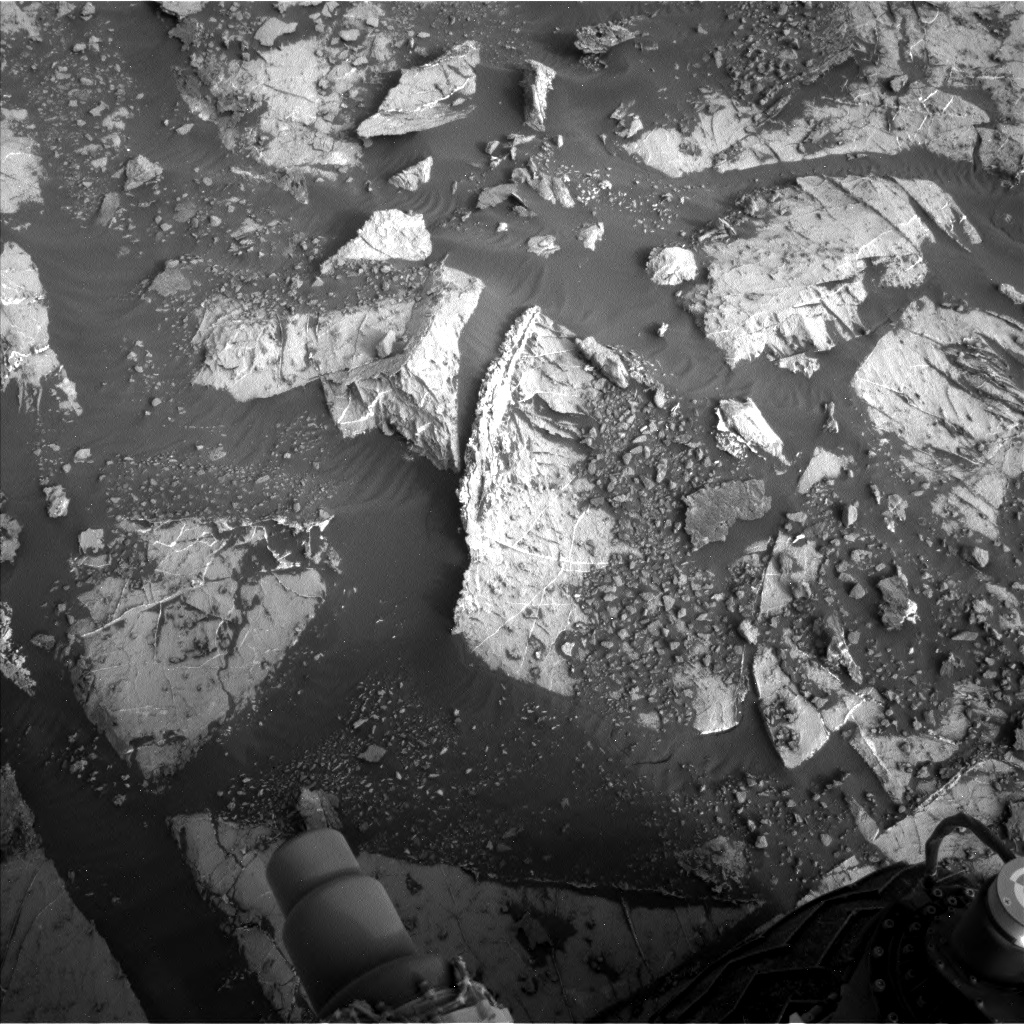3 min read

Yesterday’s drive successfully moved us uphill and closer to the “Greenheugh" pediment. The rocks around us were a riot of shapes, colors and textures, making it difficult to limit ourselves to which ones we would look at. The image above captures the six (yes, six!) targets we managed to fit in the plan today. The team is trying to understand how (or if) the bedrock chemistry changes as we move closer to the Greenheugh pediment, as the pediment marks a change in rock type from the majority of rocks we have encountered through the clay-bearing “Glen Torridon” unit. As such, many of our targets were dedicated to the bedrock today. MAHLI and APXS will analyze “Cullivoe” and “Bogmill Pow,” the former after it has been brushed by the DRT. Cullivoe represents the flatter, smoother areas of the bedrock free of veins or other erosion-resistant features while Bogmill Pow is one of the rough, multicolored areas of the bedrock. ChemCam will analyze a similarly complementary pair of targets. The goal is for “High Possil” to represent the background bedrock in this area, while “Duncairn” specifically focuses on an erosion-resistant feature that appears to be emerging from its host bedrock. Veins were a particularly spectacular feature of the workspace, often exhibiting white interiors and thin, gray exteriors. The most notable example is the bright, linear feature in the center of the image, given the name “Tilicoultry,” with a gray slab broken off and sitting on the sand to the right of the vein, named “Hastigrow.” This pair, and the bedrock and sand surrounding them, will be imaged using the Mastcam multispectral technique, which ought to help uncover the differences among the bedrock and the parts of the vein.
Curiosity will intersperse observations of the sky among all those of the ground. Mastcam will acquire early morning images to measure the dust load in the atmosphere, and Navcam will acquire late afternoon movies to look for clouds and dust devils. RAD and REMS maintain their steady watch of the weather and radiation environment in Gale, and DAN will seek signals of hydrogen from under the rover both before and after we drive. Yes, as hard as it will be to leave this spot, higher elevations call! We will drive to the highest accessible bedrock exposure just below the pediment in hopes that we can interrogate its chemistry over the weekend. Surely, more excitement awaits!
Written by Michelle Minitti, Planetary Geologist at Framework







